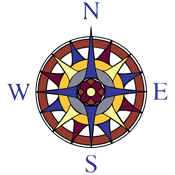3D Design & Printing Studio*
Description:
Students will learn to think like inventors and designers when creating 3D! 3D design is used not only for modeling and fabricating objects but is also at the heart of many cutting-edge technologies such as AR and VR, video game design, interactive exhibits, and more. 3D printing is used in nearly all industries and design fields today from art to animation, manufacturing to medicine, and engineering to entertainment.
In this class, students will first learn to use Tinkercard, a 3D modeling software that works in solid forms (like LEGO bricks). Then, students will transition to MeshMixer, a software that creates smooth, curved, organic shapes (like clay). They will learn to think about their design from all angles and how to subtract forms to create holes, voids, and concave features, and add forms to create projections, contours, appendages, and convex details. They will discover the limitations of 3D printing and how to handle overhanging elements or delicate details.
Students will practice the artistic design process with simple sketches before diving into the software. They will be encouraged to use reference material, whether photos, a model, or even by modifying existing, public domain 3D files. Students will use an iterative printing process in which they print their project, check it for design intent, functionality, or fit, make modifications, and print again. The class will learn how to save and convert between 3D solid object files (.stl) and object files (.obj) and work with metadata fields to protect the intellectual property of their designs.
To demonstrate the range and capability of 3D-printed designs, favorite student projects include D & D miniatures, cosplay props, Minecraft-designed creations, and beloved characters such as anime, baby Yoda, and Pokemon creatures.
Second semester, continuing students will progress to more complex assemblies including multiple parts and parts with hinges. Second semester, some students may wish to work with alternative filaments such as TPU (rubber), metal, or magnetized filament. Because of the studio format, new students can enroll second semester.
The class instructor is a design engineer with 3D Herndon and expert in 3D technologies and other areas of design and invention. A typical class will be structured with 5-10 minutes of lecture or demonstration of a new design skill, followed by 40 minutes of design "studio" time where students can receive trouble-shooting support and design tips from the instructor and have dedicated work time, and 5-10 minutes of sharing time at the end of class. As a studio class, students will work on individual projects at their own pace.
Topics in this Series: As an open studio for individual projects, students may continue from one semester to the next or enroll mid-year. Students continuing from first semester receive priority pre-registration for second semester.
Prerequisites: None
What to Bring:Students will need to bring a laptop to class for design work.
Workload: Students should expect to spend 0-1+ hours per week outside of class.
Assignments: Project criteria will be explained in class to students.
Assessments: Informal, qualitative feedback will be given in class throughout the semester as the student works.
Lab/Supply Fee: A class fee of $40.00 is due payable to Compass on the first day of class for 3D printing and filament. This provides the student with 800 g of printed product per semester. Students who are prolific designers and print often will be asked to pay an additional $5.00 per 100 g or fraction thereof.
Credit: Homeschool families may wish to count this course as a component (partial) credit in Visual Arts, Technology, or Career Exploration for purposes of a high school transcript.
We are sorry but registration for this event is now closed.
Please contact us if you would like to know if spaces are still available.

